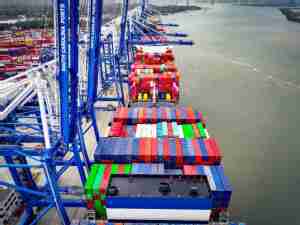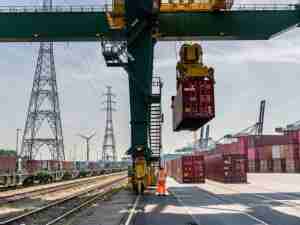December marked the twelfth consecutive month of year-over-year growth for the South Carolina State Ports Authority (SCSPA), according to results released at today’s regular SCSPA Board meeting. Charleston’s container volume in December totaled 62,405 pier containers, up 9.7 percent from the same month in 2009 (56,877 pier containers). Container volume was up 16.9 percent for the calendar year, with 793,090 containers handled in 2010 versus 678,715 pier containers in 2009.
“While we have tempered expectations on near-term volume growth, South Carolina’s ports are positioned to continue the upward trend in 2011,” said Jim Newsome, president and CEO of the SCSPA.
Breakbulk tonnage at the ports of Charleston and Georgetown was up 27 percent for the calendar year, with 876,852 pier tons handled at the two ports in 2010. Non-containerized cargo is up 36.5 percent for the first six months of the fiscal year.
The SCSPA welcomed several new shipping services during 2010, including MSC’s Golden Gate Service, CSAV’s AMEX service, Höegh Autoliners’ Middle East service a new breakbulk service with Liberty Global Logistics.
Ocean carriers continue to take advantage of Charleston’s deep water. In December, the SCSPA welcomed its 300th post-Panamax ship to Charleston and has handled 35 calls of ships of 8,000-TEU capacity or greater. Approximately 80 percent of the container ships on order are post-Panamax and, by end 2013, 50 percent of the capacity in operation will be post-Panamax, according to published reports.
“This underscores the need for deepwater harbors such as Charleston ahead of the opening of the expanded Panama Canal locks in 2014,” said Newsome.
Several new business initiatives are helping to drive volume across the docks. This year, the South Carolina Department of Transportation approved an increased overweight permit for cargo traveling in both refrigerated and dry shipping containers. Under the new permit, trucks of up to 100,000 pounds gross vehicle weight may travel on South Carolina roadways, aiding in the transport of traditionally heavy export goods. Additionally, the SCSPA launched a new marketing effort targeting transload cargo like cotton and forest products at local rail-served warehouses.
While currently enjoying the deepest water in the Southeast, the SCSPA continues to pursue federal funding for the next harbor deepening project to take Charleston’s channels even deeper. This summer the U.S. Army Corps of Engineers determined a federal interest in the project and noted that Charleston is likely the least expensive port in the region to reach 50 feet.
In addition to a new terminal operating system that will be implemented in the coming months, the SCSPA is streamlining its container operations by moving to a single-gate operating system effective Tuesday. The changes will bring numerous benefits to port users, including uniform processes and operations across all container terminals, extended gate hours and access to the SCSPA’s information systems for all port customers, all while boosting capacity by about 10 percent.










